In the laboratory there are some substances that can be used as an oxidant. Oxidants are substances that can cause oxidation of other substances so that he himself will experience reduction. Generally, non-metallic elements are good oxidizing because it has high electronegativity so easy to catch or attract electrons towards itself. Although it is not always used element in all chemical reactions.
In the laboratory, especially redox reactions that take place in the form of a solution which is used as an oxidant is permangananat ion (MnO4-), chromate ions (CrO42-), chromate ions (Cr2O72-). All three of these substances is a strong oxidizer and easy to remove oxygen that needs careful handling. These substances must be kept separate and should not be anywhere near organic substances because it can cause a fire.
When the members immediately rinse with running water. When the eye of the eye immediately soak in water, this can be done by opening the eyes of the distilled water is stored in a large bowl or bucket. After it was immediately taken to the doctor or to give eye drops. When to drink water swallowed as much as possible to dilute the chemicals are ingested and immediately taken to the doctor. Therefore, in conducting lab should never take all solution by siphoning.
ION PERMANGANANAT (MnO4-)
Purple permanganate ion as well as permanganate solution containing ions. The colors are characteristic of permanganate ion. Typically in laboratory permanganate ion derived from salts of potassium permanganate (KMnO4). KMnO4 is a purplish black crystals.
Figure crystals of potassium permanganate and potassium permanganate
When exposed to light or heated at a temperature of 230 ° C, potassium permanganate will decompose according to the reaction below.
2 KMnO4 → K2MnO4 + MnO2 + O2
Oxidation number of manganese in KMnO4 is +7. When a chemical reaction occurs oxidation of manganese down or is reduced. Manganese in KMnO4 reduction reaction depends on the acidity of the solution. In an atmosphere of strong acid solution is reduced to Mn2 + manganese and solution color faded (almost colorless). Half the reduction reaction of permanganate ion in acid.
MnO4 + 8H + + 5e-→ Mn2 + + 4H2O
In neutral or slightly alkaline ion MnO4-is reduced to insoluble MnO2 in solution or form a precipitate. Therefore, in doing titration in alkaline or alkaline atmosphere, a solution containing ions MnO4-MnO2 precipitate is not recommended because the form can obscure the end point of the titration. Half the reduction reaction of permanganate ion in neutral or alkaline.
2H2O + MnO4-+ 3e-→ MnO2 + 4OH
To make the atmosphere asamsebaiknya used sulfuric acid, because the acid does not produce side reactions. Conversely, if the use of hydrochloric acid can occur teroksidasinya possibility of chloride ions into chlorine gas and wear this reaction resulted in an excess of permanganate solution. Although for some reactions with arsenic (III) oxide, antimony (II) and hydrogen peroxide, because the use of sulfuric acid it will produce some additional difficulties.
Pemanganat Potassium is a powerful oxidizing agent, and therefore if it is in HCl will oxidize Cl-ions that cause the formation of chlorine gas and ion stability is also limited. Usually used in acid medium 0.1 N However, some substances require heating or catalyst to accelerate the reaction. If a lot of the reaction was not slow, will be found more difficulty in using this reagent.
Permanganate ion reduction reaction can also take place in a neutral and a strong base, Perekasi potassium permanganate is not a primary standard reagent. It is difficult to obtain in a pure state reagent, free of manganese (IV) oxide (manganese dioxide). After all the water used as a solvent so may still contain other impurities that can reduce permanganate to manganese dioxide.
The emergence of manganese dioxide will actually accelerate the reduction reaction permanganate. Similarly, the ion manganese (II) in solution will accelerate the reduction of permanganate to manganese dioxide, the reaction takes place very rapidly in neutral. Given these reasons the manufacture of standard solution of permanganate is done as follows. Dissolve the amount (grams) of the reactants in the water and boil for an hour over a water bath. Then filtered through a filter that is free from reducing agent.
Bertutupkan container glass stopper is used to store the solution, to be completely free of impurities such as grease or other impurities. For this purpose, usually the container is washed using a mixture of potassium dichromate and sulfuric acid, followed by rinsing with distilled water. This solution should be stored in dark, protected from light, because it's dark-walled bottles should be used.
Reaction with concentrated sulfuric acid to form Mn2O7 KMnO3. This reaction takes place very eksotermsis and can explode. Likewise with hydrochloric acid to form a highly toxic gas Glor. The reaction between nitric acid with the alkene double bond will break and earned a carboxylic acid.
CH3 (CH2) 17CH = CH2 + + 2KMnO4 3H2SO4 → CH3 (CH2) 17COOH + CO2 + 4H2O + K2SO4 + 2MnSO4
KMnO4 can oxidize aldehydes into carboxylic acids. For example, n-heptanal oxidize into acids heptanoat.
5C6H13CHO 2KMnO4 + + 3 H2SO4 → K2SO4 + 3H2O 5C6H13COOH + + 2MnSO4
Moreover KMnO4 can also oxidize the methyl group attached to the benzene ring. For example, oxidizes toluene to benzoic acid.
5C6H5CH3 + + 6KMnO4 5C6H5COOH 9H2SO4 → 14H2O + + + 2K2SO4 6MnSO4
Chromate ion (CrO42-) AND dichromate (Cr2O42-)
In the laboratory certainly encountered salt containing chromate and dichromate ions. A common salt and sodium chromate are kaliium or dichromate with the chemical formula Na2CrO7 (sodium chromate), K2CrO7 (potassium chromate) and Na2Cr2O7 (sodium dichromate), K2Cr2O7 (potassium dichromate).
Figure Four chromium solution. From left: yellow solution is potassium dichromate (K2Cr2O7, orange) and sodium chromate (Na2CrO4), green is chromium (III) chloride (CrCl3), purple is chromium (III) nitrate (Cr (NO3) 3).
Figure Kristal some chromium compounds. From left to right: Sodium chromate tetrahydrate (Na2CrO4 · 4H2O), potassium dichromate (K2Cr2O7), ammonium dichromate ((NH4) 2Cr2O3), chromium trioxide (CrO3), chromium oxide (Cr2O3)
(image source: http://en.tjfuqiang.com/)
Both chromate and dichromate ions containing chromium with a +6 oxidation merupakaan highest oxidation state of chromium in senyawaaannya. therefore the chemical reaction of chromate and dichromate ions will experience a reduction reaction. Reduction reaction of chromate and dichromate ions depends on the acidity of the solution.
The yellow color is characteristic of the chromate ions in solution, while the red color is typical of the dichromate ions. Solution containing a yellow chromate ions when diasamakan, the solution will be obtained in red-orange for ion CrO42 turned into Cr2O72-.
2CrO42-+ 2H + → Cr2O72-+ H2O
Conversely, if a solution containing dichromate ions basified then transformed into ion-ion Cr2O72-CrO42.
Cr2O72-+ 2OH-→ 2CrO42-+ H2O
Therefore, if the reaction takes place in an atmosphere that acts as an oxidizing acid is Cr2O72-and vice versa when conducted under alkaline reaction which acts as an oxidant is CrO42-.
In a chemical reaction when chromate and dichromate ions act as an oxidant (when treated with a reducing agent) chromium oxidation decreased to +3 and products obtained depend on the state of the acidity of the solution.
Chromium ions in the acid solution is reduced to Cr3 + ions in the solution slightly alkaline reduction product is Cr (OH) 3 is insoluble and strongly alkaline ions in solution chromate ions are reduced to chromite (CrO2-). Reaction equation as follows.
Acid solution
14H + + 6e + Cr2O7 + + 7H2O → 2Cr3
Slightly alkaline solution
CrO42 + 4H2O + 3e-→ Cr (OH) 3 + 5OH-
Strongly alkaline solution
CrO42 + 2H2O + 3e-→ CrO2-+ 4OH-
Both Na2CrO7 (sodium chromate), K2CrO7 (potassium chromate), Na2Cr2O7 (sodium dichromate) mapun K2CrO7 (potassium dichromate) is higoskopis so it can form a tetra-, hexa-, and dekahidrat.
Sodium chromate (Na2CrO4) is used as a corrosion inhibitor in the petroleum industry, as a reagent in the textile dyeing, as a wood preservative. By utilizing the Cr-51 isotope with a half-life 27.8 days, a solution of sodium chromate (VI) is used in medicine to determine the volume of circulating red blood cells, cell survival time and evaluation of blood loss.
A mixture of potassium dichromate with 35% nitric acid to obtain a solution called Schwerter's solution is used to test for the presence of various metals, especially silver. Transform into pure silver solution bright red, sterling silver (92.5% silver alloy with other metals usually copper or gold) changed into a dark red solution, the solution becomes brown when high copper content and even green.
SOURCE
James E. Brady. University chemistry principles and structure keliama edition vol 1.
Qualitative Inorganic Analysis Vogel Macro And Semimikro (translation Setiono & Pudjaatmaka) fifth edition.
Underwood, A. L & R. A Day, Jr.. 1999. Quantitative Chemical Analysis (translated by A. Hadyana Pudjaatmaka) fifth edition. Jakarta: publisher.
Devy Agustyaningsih. , 2010. Determination of Levels of Potassium Permanganate Using simple LED-based photometer and a CdS photocell detector. Thesis Malang University Faculty of Mathematics and Natural Sciences, Chemistry Program.
Internet Sources
Wikipedia.org
uncp.edu / home / mcclurem / ptable / chromium / cr.htm

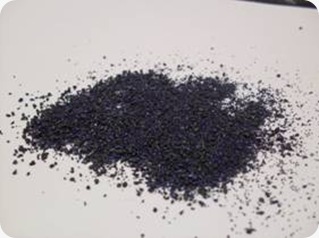
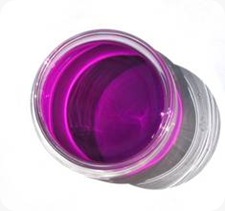
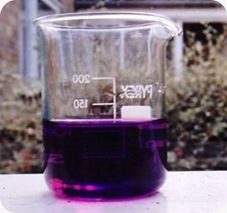
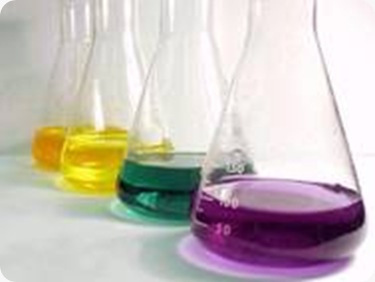
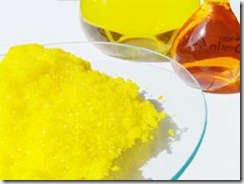
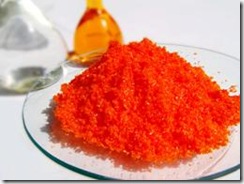
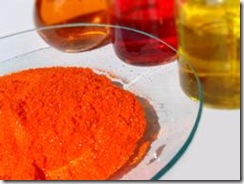
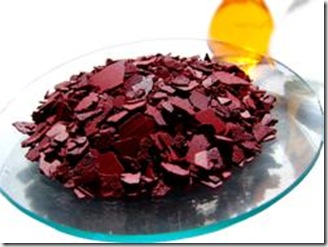
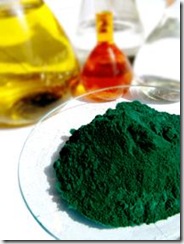


0 komentar
Post a Comment